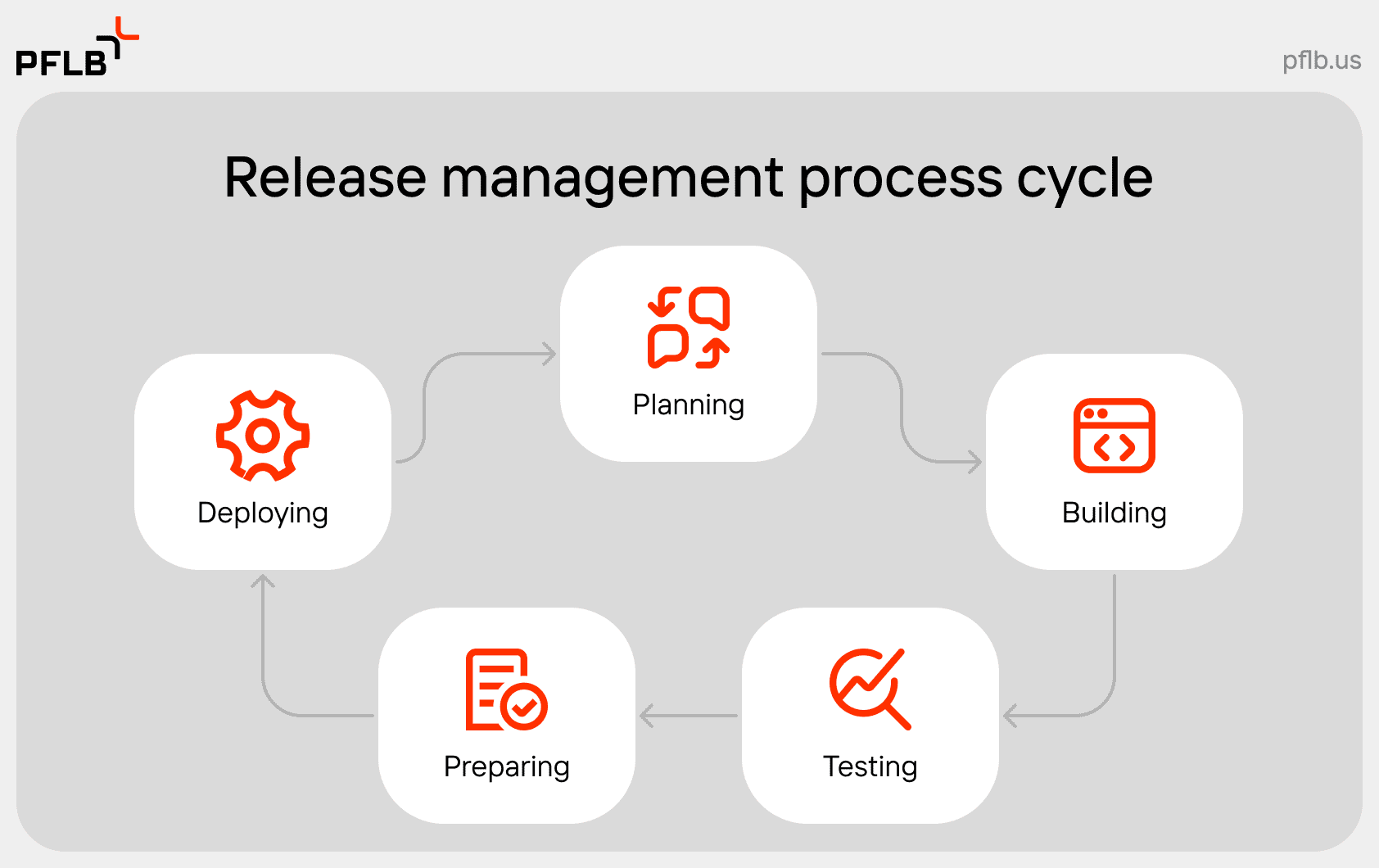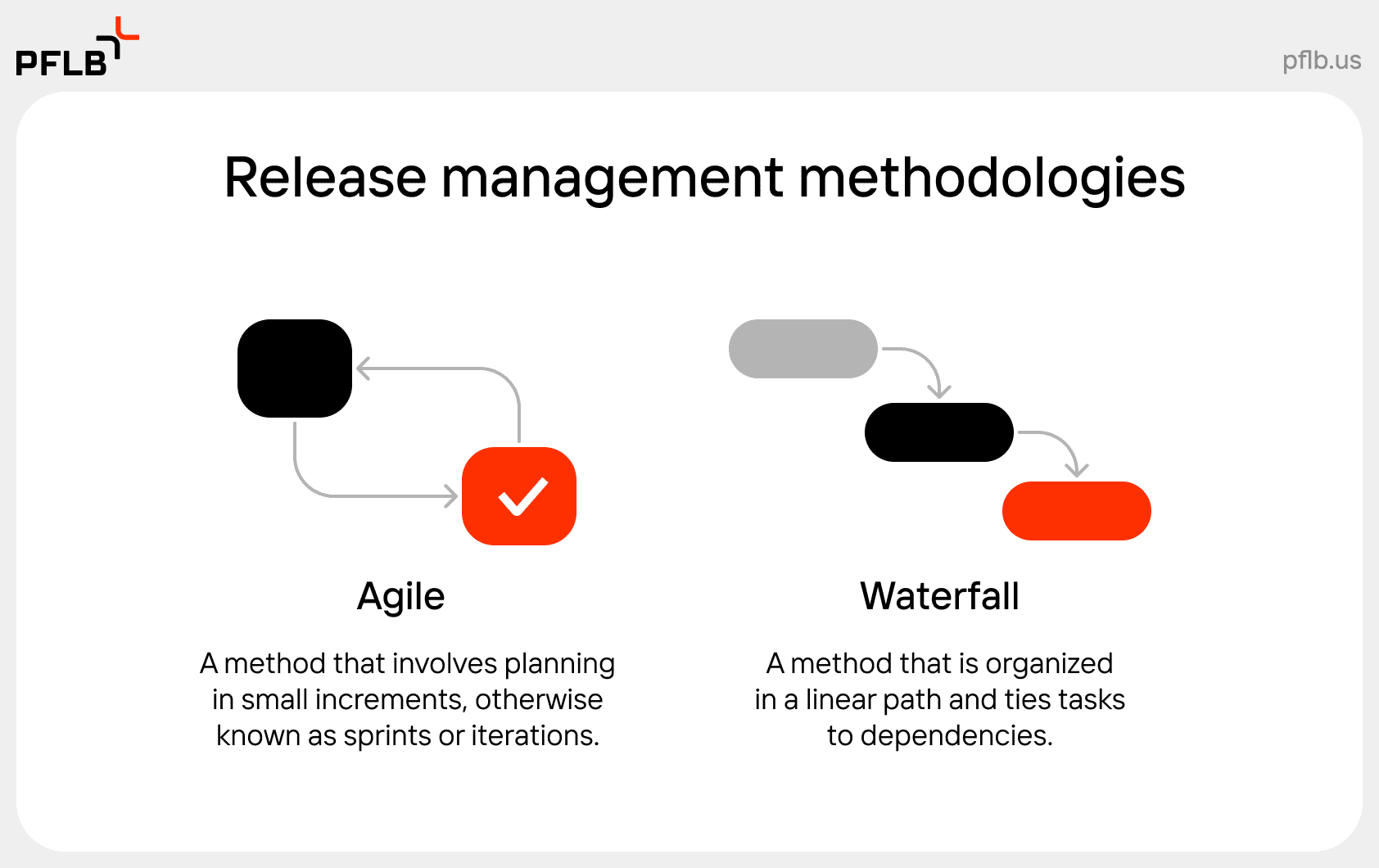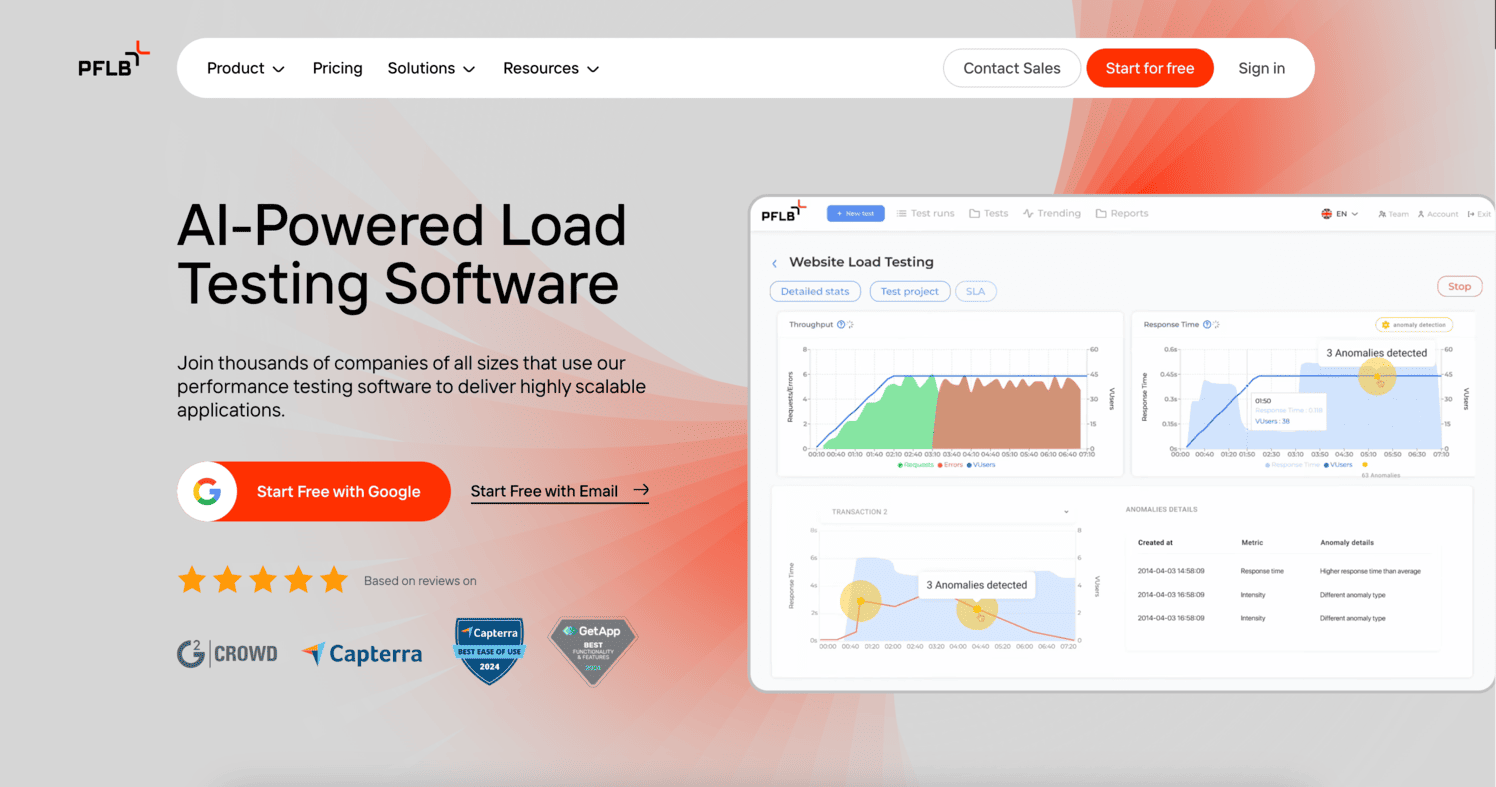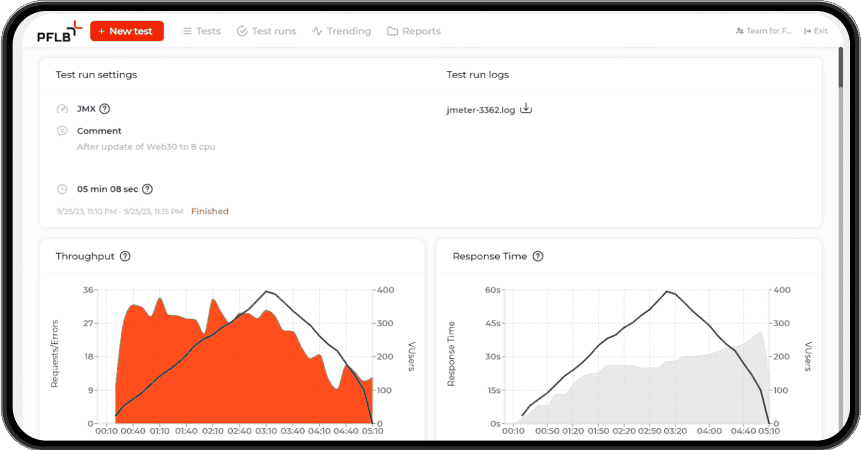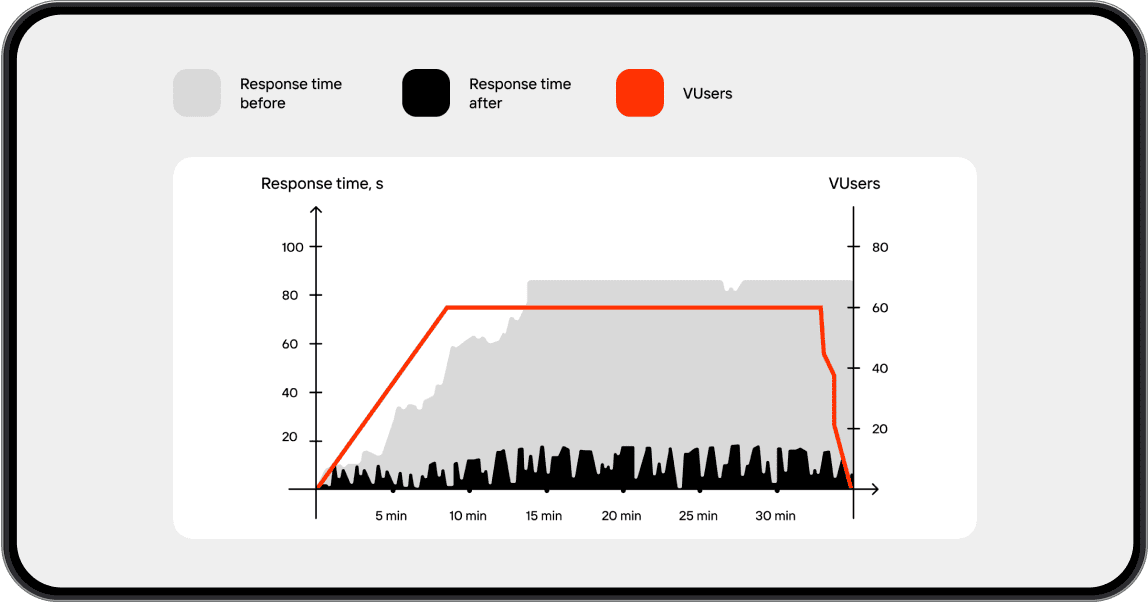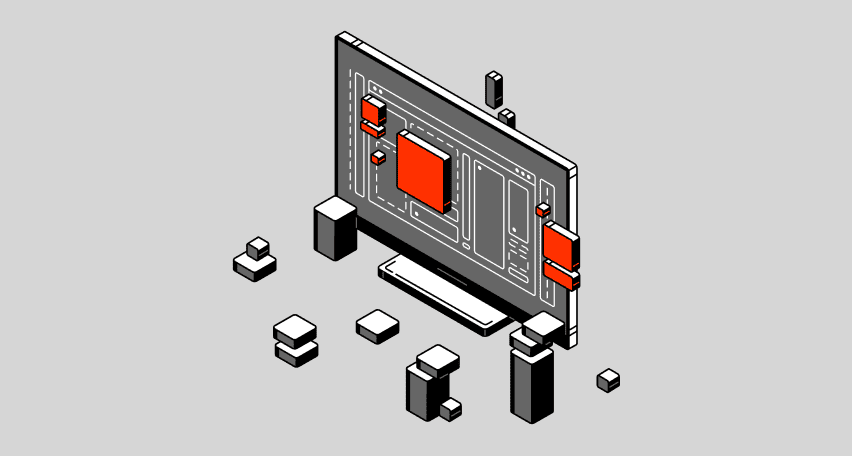Ever had a software update completely mess things up? One day, everything’s running fine, then boom! After the update, half your tools don’t work, the system slows to a crawl, and you’re stuck troubleshooting instead of getting things done.
Now, imagine that happening at a company level. An unsuccessful release can mean angry customers, lost revenue, and a team scrambling to fix things that should’ve been caught earlier. No one wants that.
This is why understanding what is release management process is crucial. You shouldn’t just push updates. You need to make sure they actually work when they go live. The goal? Fewer surprises, smoother deployments, and no fire drills at 2 AM because something broke.
So how do you get there? What does a solid release process look like? And how can you make sure your team isn’t constantly putting out fires after every update?
Let’s break it all down now!
What is Release Management?
At its core, release management is about making sure software updates don’t turn into a nightmare. Here is the easiest release management definition for you:
“Release management is the structured process that takes an update from an idea to a fully functioning, glitch-free release that actually makes things better not worse.”
Think of it like running a restaurant. You wouldn’t serve a dish to customers without making sure the ingredients are fresh, the recipe is right, and the plating looks good. In the same way, release management ensures that new features, patches, and updates are tested, approved, and delivered in a way that keeps everything running smoothly.
Without a structured release process, things can get messy fast.
Without a solid release process, things can spiral fast. Bugs slip through, compatibility issues pop up, and before you know it, the “fix” creates more problems than the original issue. A well-structured release management process prevents that by:
Whether you’re working in software development, IT operations, or DevOps, having a clear, repeatable release process is the difference between a smooth update and a total disaster.
Benefits of Release Management
A structured release lifecycle management helps organizations stay on track and avoid costly mistakes. Here’s how:
6 Phases of The Release Management Process
Software release management isn’t just about hitting a “deploy” button and hoping for the best. It’s a structured process with clear steps to make sure everything goes smoothly from planning to rollout.
The release management life cycle consists of several key phases, from planning to deployment and monitoring.
Let’s break down the release management process steps to understand how each phase contributes to a smooth release.
1. Release Planning: Setting the Stage
Before starting any processes, the team needs a solid plan. This phase is all about defining the scope, objectives, and timeline of the release. What’s getting updated? Who’s responsible for what? Are there any risks?
At this stage, teams answer questions like:
A clear plan ensures everyone’s aligned, and there are no surprises down the road.
2. Release Building: Bringing It to Life
Once the release management plan is set, developers start writing the code. This is where the release begins to take shape. It’s not just about writing new features but also ensuring that:
At this stage, version control and continuous integration (CI) tools come into play, helping teams keep track of changes and avoid messy conflicts.
3. Release Testing: Catching Issues Before They Happen
You wouldn’t roll out a new product, launch a marketing campaign, or implement a major operational change without testing things first. Why should releases be any different?
Whether you’re deploying software, rolling out a new internal system, or updating a critical process, thorough testing makes sure that everything works as expected before it reaches the real world.
Testing will help you understand if the release is actually stable and ready for users.
Common testing types include:
✔ Functional testing: Does everything work as it should? From product features to business workflows, functional testing ensures that all components operate correctly in different environments.
✔ Performance testing: Can your system, process, or service handle real-world conditions? Whether it’s a high-traffic website, an operational workflow, or a new digital tool, performance testing helps uncover weak points before they become bottlenecks. When working with microservices or high-performance APIs, a gRPC load testing tool can help simulate real-world traffic, measure response times, and identify performance issues before they affect users.
✔ Security testing: Are there vulnerabilities that could lead to risks? Security isn’t just a concern for software. It applies to any business process or system where data, compliance, and confidentiality are at stake.
✔ User experience testing: How will people interact with the new release? Will it make their work easier or introduce new friction points? Testing from a real-world perspective ensures that transitions are seamless and intuitive.
At PFLB, we provide comprehensive performance testing solutions, helping organizations:
4. Release Preparing: Final Checks Before Execution
Once testing is complete and everything looks solid, the next step is preparing for a smooth rollout. But before moving forward, there are a few critical steps to ensure that everything and everyone is ready.
A poorly planned release can lead to confusion, inefficiencies, or even failure, so this phase is all about organization and risk management.
Key final preparations before any release
📌 Documentation is updated – Clear, accessible documentation helps avoid last-minute confusion. Whether it’s instructions for teams, process guidelines, or communication materials, ensuring everything is properly documented saves time and reduces errors.
📌 Stakeholders are informed – Everyone involved, whether it’s leadership, employees, partners, or customers, needs to be aware of what’s changing, when it’s happening, and how it will affect them. Proper communication prevents misunderstandings and ensures a smoother transition.
📌 Rollback and contingency plans are finalized – Even the best-planned releases can hit unexpected roadblocks. Having a backup strategy in place means you can quickly correct course if needed, minimizing disruptions.
📌 Resources and support are in place – Whether it’s additional staffing, customer support readiness, or technical assistance, ensuring the right people are available post-release can make all the difference in handling potential issues.
At this stage, the focus is on alignment, risk management, and preparation. A well-prepared release ensures that when things go live, they happen smoothly, efficiently, and with minimal surprises.
5. Release Deployment: The Rollout Begins
This is it! The moment everything has been leading up to. After all the planning, testing, and final checks, it’s time to put the release into action. But launching something new isn’t as simple as flipping a switch and hoping for the best. A smooth deployment requires careful execution and constant monitoring.
Different approaches to deployment
There’s no one-size-fits-all approach to rolling out a release. The strategy depends on the complexity of the change, the level of risk involved, and how much control is needed during the process.
Here are a few common ways organizations handle deployment:
| Deployment Approach | How It Works | Risk Level | Rollback Ease | Best For | Downsides |
| Gradual Rollout (Rolling) | Releases updates to a small group first, then expands gradually | Low | Moderate – requires reverting changes in small groups | Large-scale updates with potential unknown risks | Slower rollout, requires active monitoring |
| Parallel Environments (Blue/Green) | Runs two environments (old & new) in parallel. Switches traffic when ready | Very low | Instant – switch back to old version anytime | Mission-critical systems that require zero downtime | Needs two fully operational environments |
| Controlled Access (Feature Toggles) | New features can be toggled on/off for selected users before full release | Low | Instant – toggle feature off immediately | Testing new features without affecting all users | Doesn’t fully test system-wide impact before full launch. |
📌 Gradual Rollout (Rolling Deployment) – Instead of releasing everything at once, the change is introduced to a small group first, then gradually expanded. This helps identify issues early before they affect a larger audience. Think of it like a restaurant testing a new dish on a few customers before adding it to the full menu.
📌 Parallel Environments (Blue/Green Deployment) – Two environments run side by side: the old version stays live while the new one is tested in real conditions. Once everything looks good, traffic is redirected to the new version. If something goes wrong? The switch can be flipped back instantly, keeping things running smoothly.
📌 Controlled Access (Feature Toggles) – Not every release needs to go live for everyone at the same time. Feature toggles allow teams to turn new functionality on or off for different users. This means new features can be rolled out silently, tested in real-world conditions, and only made visible when everything checks out.
6. Monitoring & Post-Deployment Checks: Keeping Everything on Track
Just because a release is live doesn’t mean the job is done. In fact, the period immediately after deployment is when the real testing begins. Now, it’s time to watch for issues, track performance, and respond quickly if anything goes wrong.
What to monitor after a release?
✅ Unexpected errors or crashes – Is everything working as expected? Any unusual spikes in system failures? Monitoring tools should automatically flag critical errors so they can be addressed before they cause widespread issues.
✅ Performance slowdowns – Are key processes running smoothly, or is something dragging the system down? Even a small update can impact performance, so it’s crucial to track response times, system load, and uptime metrics.
✅ User feedback & adoption – Are employees, customers, or end-users experiencing issues? Are they using the new release as expected? Sometimes, the first sign of a problem comes from those directly interacting with the release, so collecting and analyzing feedback is key.
✅ Security vulnerabilities – Did the release introduce new weaknesses? Post-deployment security scans help ensure compliance and prevent potential breaches.
The Importance of a Rollback Plan
Even with the best preparation, things don’t always go as planned. If a release causes serious problems, rolling back to the previous version can be the quickest way to restore normal operations. That’s why every deployment should have a clear rollback plan, including:
Release Management Methods
Choosing the right release management method can make or break a rollout. Two of the most common approaches are Agile and Waterfall, each with its own strengths and challenges. The right choice depends on the project’s complexity, team structure, and how much flexibility is needed during the release process.
1. Agile Release Management
Agile is all about flexibility and continuous improvement. Instead of planning everything upfront, Agile teams release updates in small, incremental changes, allowing for constant feedback and adjustments.
How it works
| Agile Release Management | |
| Advantages | Disadvantages |
| Faster delivery – Frequent releases mean users get updates sooner. | More complex coordination – Frequent releases require strong communication between teams. |
| Easier to adapt – If priorities shift, teams can adjust plans quickly. | Not ideal for all industries – Highly regulated sectors may need a stricter, more structured approach. |
| Lower risk – Bugs and issues are caught early instead of piling up. | Continuous testing required – Without proper testing, quick releases can introduce hidden issues. |
2. Waterfall Release Management
The Waterfall method follows a linear, structured approach. Everything is planned upfront, and each phase must be completed before moving to the next. There is no going back once a phase is finished.
How it works
| Waterfall Release Management | |
| Advantages | Disadvantages |
| Clear structure – Everything is documented and planned in advance. | Less flexibility – Once development starts, changes are difficult to make. |
| Easier to manage – Since phases don’t overlap, teams work in a predictable order. | Longer release cycles – No updates until the full release is ready. |
| Works well for large-scale projects – Good for industries where changes must be carefully controlled. | Higher risk of failure – If a major issue is found late, fixing it can be costly and time-consuming. |
Release Management Best Practices
A well-structured software release management process minimizes risks, improves efficiency, and ensures smooth deployments. Here are some key best practices that organizations should follow to make their releases predictable, reliable, and successful.
Establish a Standardized Release Process
Having a clear, repeatable process for planning, testing, and deploying releases ensures consistency and reduces errors. Define each stage of the release, assign responsibilities, and document the workflow so that every team member knows what to expect.
Key elements of a standardized process:
Implement Automation Where Possible
Manual deployments increase the risk of human error. Automating key parts of the release process, such as testing, integration, and deployment, saves time and improves reliability.
Common automation areas:
The more automation in place, the faster and more secure the release process becomes.
Foster Collaboration Between Teams
Release management isn’t just a developer’s responsibility, it involves QA teams, IT operations, security, and business stakeholders. Strong communication ensures that all teams are aligned, potential issues are addressed early, and deployments happen without unnecessary delays.
Ways to improve collaboration:
When teams work together, releases are smoother, and last-minute surprises are minimized.
Prioritize Continuous Delivery and Improvement
Instead of waiting for large, risky updates, organizations should aim for frequent, incremental releases. This approach reduces complexity and allows for faster feedback, ensuring that software or services improve over time.
A release process that encourages continuous improvement ensures long-term success.
Monitor Releases in Real-Time
Deployment doesn’t end when a release goes live, it needs to be monitored to catch any performance drops or unexpected issues.
What to monitor post-release:
A proactive monitoring approach ensures that problems are detected before they impact users.
Maintain Clear Documentation
Every release should be properly documented, including what’s changing, who is responsible, and how the update impacts users. Clear documentation improves accountability and makes it easier to troubleshoot issues.
What to include in release documentation:
A well-documented release process saves time and prevents confusion down the line.
Release Management Success Indicators
How do you know if a release was truly successful? A smooth deployment is important, but success goes beyond just getting the update live. Here are key indicators that define an effective release:
How PFLB Helps Deliver Reliable and High-Performance Releases
At PFLB, we provide software performance testing solutions that help businesses detect bottlenecks, prevent failures, and optimize system stability before deployment. Our expertise helps teams launch releases that are fast, scalable, and resilient.
Why Use PFLB for Release Testing?
✅ Cloud-based & scalable – No need for expensive infrastructure. PFLB’s cloud-native platform simulates real-world loads to make sure your system can handle peak traffic.
✅ Comprehensive testing – We conduct load, stress, endurance, and spike testing, helping teams understand how their software behaves under different conditions.
✅ Industry expertise – From banking and healthcare to e-commerce and telecom, we’ve tested mission-critical systems for enterprises that can’t afford downtime.
✅ Early issue detection – Catching performance bottlenecks before deployment prevents costly fixes post-release.
✅ Realistic user simulations – Our testing solutions replicate real-world usage, mimicking thousands of concurrent users to assess system stability.
Real Results: How PFLB Solves Performance Challenges
We’ve worked with top-tier companies to solve complex performance issues before release, ensuring seamless go-lives:
Make Performance Testing Part of Your Release Process
By integrating performance testing into your release workflow, you minimize risks and ensure that your software:
✔ Works efficiently under real-world conditions.
✔ Handles traffic spikes without slowdowns.
✔ Meets business requirements without post-release surprises.
Final Thoughts
A well-structured release management process is the difference between a seamless deployment and a chaotic rollout. By following best practices, choosing the right methodology, and integrating performance testing, organizations can deliver updates that are stable, efficient, and user-friendly.

